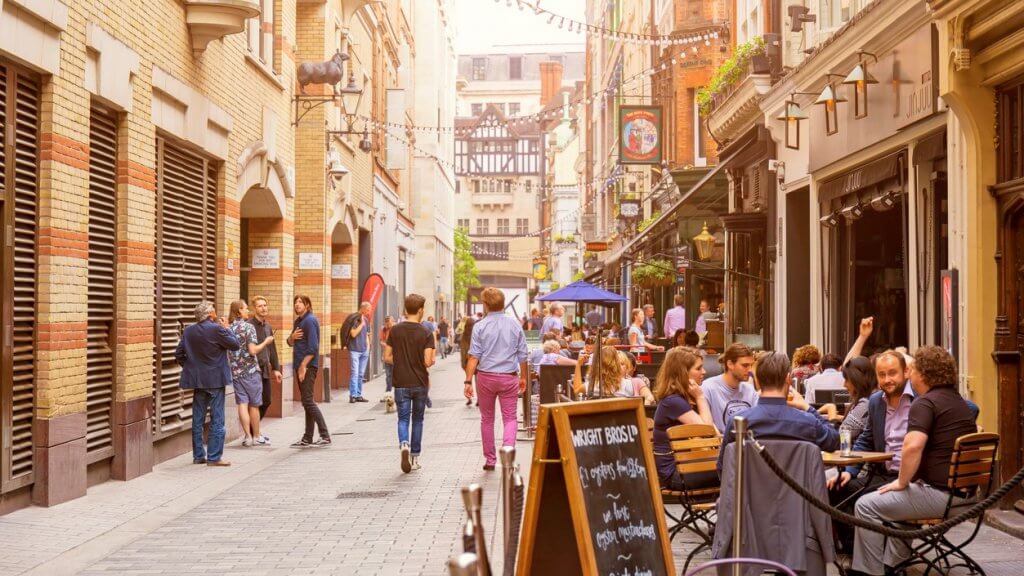How Pubs May Try To Control The Spread Of Covid-19

Standing back-to-back, ordering remotely and sitting at tables with members of your family set apart from other customers could be how ordering a beer or a pub meal could look like as lockdown is eased, scientists have suggested.
Other options include having screens at the bar and outdoor service while the weather is warm, as the hospitality industry and other businesses puzzle over how to safely reopen.
The suggestions were made at a Science Media Centre and Royal Academy of Engineering (RAE) briefing on how to help control the spread of infection in public spaces, businesses, hospitals and transport sites.
Self-cleaning surfaces, when the technology is eventually developed, may be another tool to help firms tackle the virus.
See our full briefing covering the key engineering issues identified as critical for the UK’s recovery, including:☑️Measures to take during the pandemic to lessen its impact☑️Developing an exit strategy☑️Building a resilient futureRead it here: https://t.co/iuSL4RtJ07 pic.twitter.com/MVTz6kWD5u
— Royal Academy of Engineering (@RAEngNews) June 2, 2020
Catherine Noakes, a professor of environmental engineering for buildings at Leeds University, and chairwoman of the Government’s Sage Environmental Working Group, could not say if Covid-19 has marked the end of the cosy British pub.
She described pubs as “a difficult challenge” as they can be crowded with people, but added that the situation may be helped as the nation eases out of lockdown during warm weather.
Prof Noakes said outdoor transmission is believed to pose “a much much lower risk, so any operations which can move outdoors temporarily is a really good starting point”.
She added: “I think it is worth thinking about being creative about how you design spaces, because the highest risks are where people are face-to-face and therefore have a direct exposure to the immediate (virus) droplets and aerosols.
“Studies show that can go up to two metres, so that is a difficult one and obviously if you have got a mask on you can’t drink your beer.
“Perhaps think about how you arrange spaces so that not everyone is face-to-face, you have got people back-to-back, you have got partitions in some of these spaces.
“Ventilation is probably a challenge. It is not an easy and quick solution because many buildings do have poor ventilation.”
Hanging around at the bar could be replaced with technology to allow orders to be taken remotely.
Prof Noakes said: “Transmission happens when somebody is in prolonged contact (with someone else), so if you can reduce the amount of time bar staff are, for example, spending with people, then that will help.
“There are about one in 500 people who are thought to be infected, and if you start to think about a crowded pub, you very easily are going to have a probability of having someone who is infected in that pub.
“As the number of cases in the community drop your risks start to become much lower, and hopefully we get to a point where there is such a small number of cases and hopefully with an effective track and trace system in place that it means the measures are less important.”
Shaun Fitzgerald, an RAE visiting professor at Cambridge University and a Sage Environmental Working Group member, suggested family-friendly restaurants where relatives can sit together at a table a sufficient distance away from others.
Ventilation of the venue is important and “becomes rather more challenging in colder weather when people are not as willing to throw open a window”.
Trying to get an organisation back up and running could include having a quarter of the workforce in at one time to make social distancing easier, according to Dr Fitzgerald.
Felicity de Cogan, an RAE enterprise fellow, said a lot of work is being done to develop self-cleaning surfaces, which could be applied to areas like heavily used door handles and railings.
Such surfaces are designed to be permanently antimicrobial to kill any virus or bacteria that lands on it.
She said: “We know that technologies such as silver and copper are 99% effective but they are 99% effective after two to six hours, which is not quick enough. The time-frame we really need is seconds to minutes.”
The aim is also to build this technology into materials so there is an extended time of protection, “ideally for years, and then this can be built into environments as a long-term solution”.




